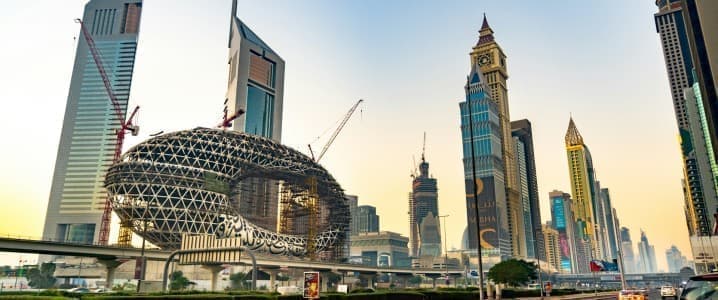
The Middle East is poised to become the world’s second-largest gas producer by 2025, overtaking Asia, according to research from Rystad Energy. This significant shift reflects a remarkable growth in gas production, which has increased by approximately 15% since 2020. Regional producers are committed to monetizing their gas reserves and expanding export capabilities to meet rising global demand.
Currently, the Middle East produces about 70 billion cubic feet per day (Bcfd) of gas, with expectations to boost this figure by 30% by 2030 and 34% by 2035. Key developments in countries such as Saudi Arabia, Iran, Qatar, Oman, and the UAE are driving this growth. By 2030, the region is projected to add another 20 Bcfd, equivalent to half of Europe’s current gas demand.
This optimistic outlook depends largely on the stability of Brent crude oil prices, which need to remain around $70 per barrel, and oil-indexed gas prices between $7-9 per million British thermal units (MMBtu). Should prices dip below $6 per MMBtu, there could be delays in new projects, potentially reducing anticipated growth from 30% to 20% or less, depending on how long the downturn lasts.
Significant Expansion in Gas Exports
To capitalize on this growth, the Middle East is preparing for a substantial increase in gas exports. By 2030, the region is expected to have an additional 10 Bcfd of gas available for export. This positions the Middle East as a crucial supplier for Europe, which is actively seeking to reduce its dependence on Russian energy, as well as for the rapidly expanding markets in Asia.
The Gulf nations of Qatar, the UAE, and Saudi Arabia are at the forefront of this gas expansion. Qatar’s ambitious North Field expansion aims to increase its liquefied natural gas (LNG) capacity by 80%, rising from 77 million tonnes per annum (Mtpa) to 142 Mtpa by the end of the decade, while maintaining a competitive breakeven price of under $6 per MMBtu. By 2028, the region is expected to add 60 Mtpa of new capacity, contributing significantly to Rystad Energy’s projected global increase of 150 Mtpa.
The expansion plans will require investments exceeding $50 billion, underscoring the region’s strategic efforts to enhance its position in the global LNG market. Qatar is leading this charge, with plans to add 48 Mtpa through its North Field East and North Field South projects. Additionally, the UAE is set to contribute an extra 10 Mtpa from the Ruwais LNG project, while TotalEnergies is developing the Marsa LNG project in Oman, with a capacity of 1 Mtpa.
Production Trends and Future Outlook
Currently, Iran leads the region in gas production, generating about 25 Bcfd, followed by Qatar at 16 Bcfd and Saudi Arabia at 8 Bcfd. Despite facing challenges from Western sanctions, Iranian gas production is expected to rise modestly to approximately 26 Bcfd by the end of the decade, primarily from the South Pars field.
Qatar, on the other hand, is projected to nearly double its output, reaching 24 Bcfd, driven by the robust development of its North Field. The UAE and Saudi Arabia are each expected to contribute an additional 3 Bcfd, while Israel’s production is predicted to increase by 1.5 Bcfd with the next phases of expansion at the Leviathan and Tamar fields.
As the decade progresses, while Iran is anticipated to maintain its title as the largest gas producer in the Middle East, Qatar is expected to surpass it in the early 2030s. The UAE and Qatar are actively expanding their capacity, which reinforces the region’s emerging role as a powerhouse in the global LNG market.
The new LNG volumes produced in Qatar and the UAE are primarily aimed at Asian and European markets, with contracts indicating a strong preference for Asian buyers. Notably, total sales and purchase agreements are anticipated to peak at about 21 Mtpa between 2027 and 2030, with Chinese national oil companies and major global energy players emerging as key customers.
This extensive growth reflects a significant shift in the global energy landscape, positioning the Middle East as an integral player in meeting the increasing energy demands of both Europe and Asia in the coming years.






